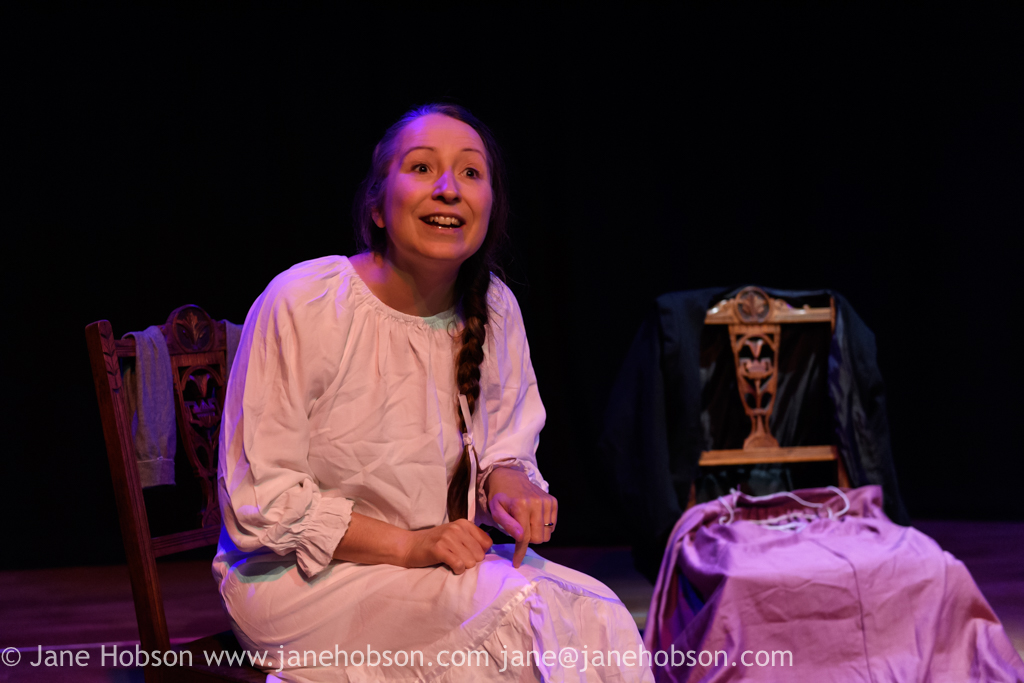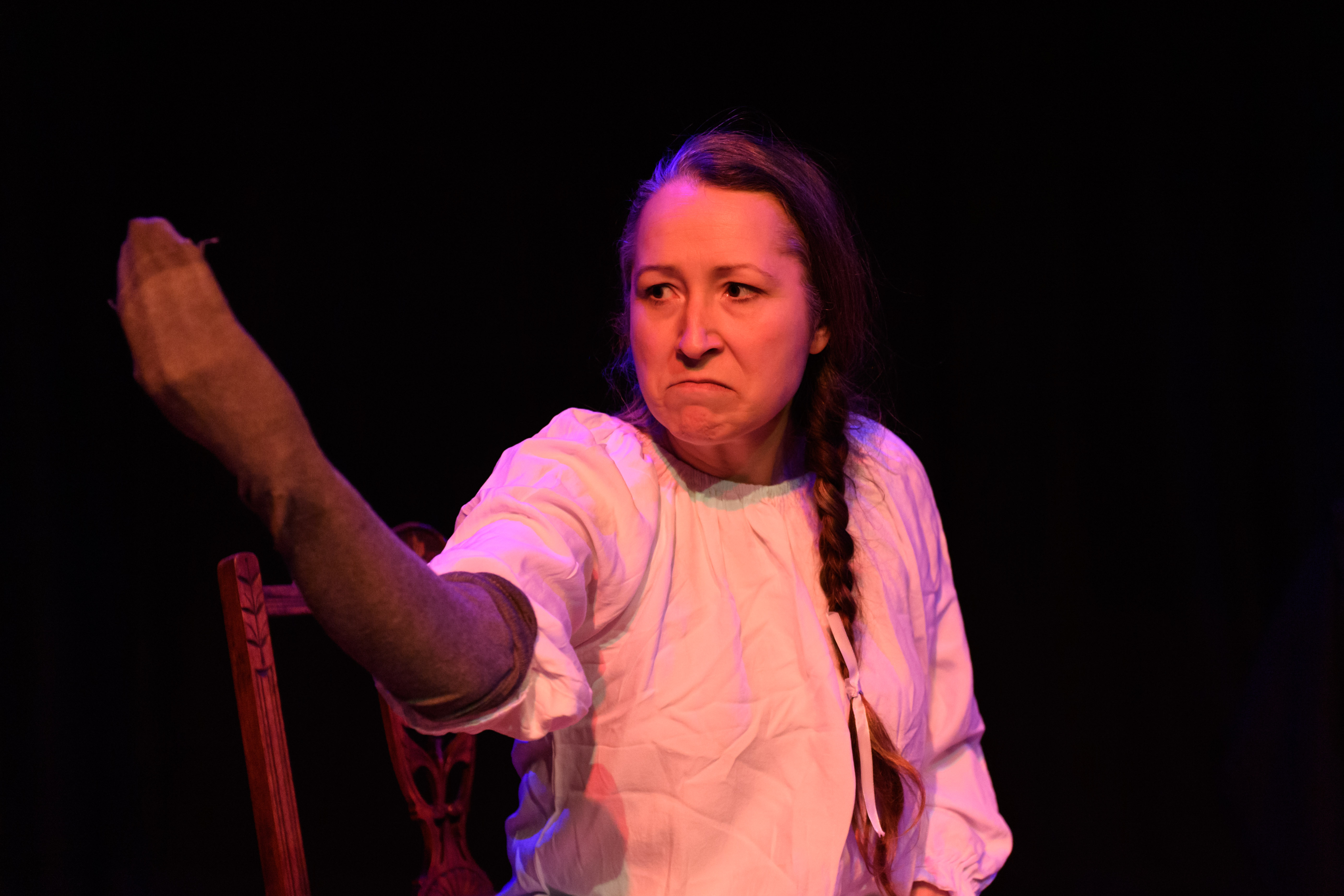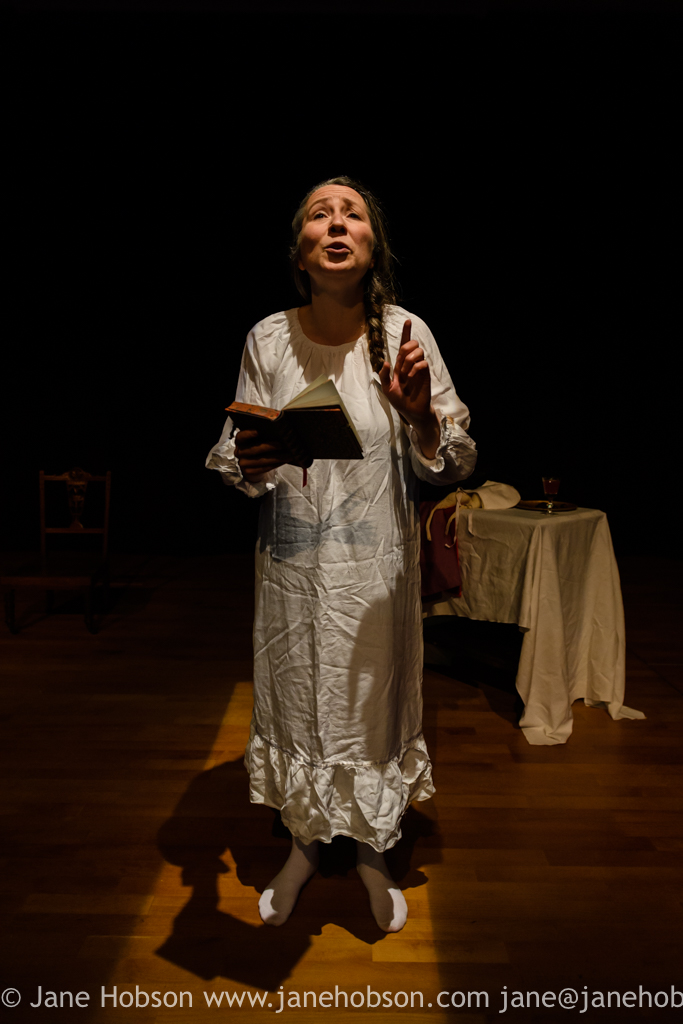Women's History Month 2024, 3: Alice Thornton and Anne Danby on Stage
March is Women's History Month and, like last year, to mark it we’re bringing you a series of blog posts, this time on Alice Thornton and various women that feature in her writings. In this third post, actor and playwright Debbie Cannon writes about Alice Thornton’s relationship (on stage) with her niece-by-marriage, Anne Danby.

Why Anne?
When I first sat down with Cordelia Beattie to discuss writing a play about Alice Thornton’s life, one of my first steps was identifying the people in Alice’s world who had the biggest impact on her. It quickly became obvious that the story Alice was telling was influenced strongly by one other person – her niece by marriage, Anne Danby. It was clear that Anne had been an important person in Alice’s life, someone Alice trusted and who she believed had gone on to betray her. In contrast with the many times God had delivered Alice from death, Alice was still waiting for her deliverance from Anne Danby. Alice had to talk about Anne in the play. And when we collected feedback from our first run of The Remarkable Deliverances of Alice Thornton in November 2019, there was a consistent theme – more Anne!
In 2023, when we had the chance to re-write the play for a second run at Durham Cathedral, including more about Anne was a priority. In the meantime, there was the bonus of a letter examined by the Alice Thornton’s Books team, written by Anne to Parson Farrer after she had been ejected from the Thornton house.
We had a sample of Anne’s voice! This was the springboard to creating three new sections in the play in which Anne speaks rather than being just referred to – albeit via Alice’s imagination.
Who was Anne?
Anne was taken in by Alice in 1667, after Anne’s marriage to Alice’s nephew Christoper Danby had broken down. She brought with her a legacy of trouble and a bad reputation. The couple had married in Virginia in the early 1650s – or rather, according to Christopher’s immediate family, Anne had ‘inveigled’ him into marriage without their families’ consent. Anne haggled with her in-laws for financial support, with Alice sometimes acting as go-between. The Danbys complained that Anne ‘had not a groat portion’, so for her to be ‘so proud and high as to require’ them ‘to furnish her with silk stockings, satin and cloth, silver mantles...was more presumption than any could imagine.’[1] However, Alice apparently welcomed Anne into her family: Anne was godmother to Alice’s new son Christopher in 1667, and Alice reports that Anne was party to private plans for the marriage of Alice’s daughter Nally to Thomas Comber, as well as Alice’s worries over her husband’s financial unreliability.

By the following year, the relationship between the two women had broken down: Alice accused Anne of instigating false gossip about an affair and financial wrongdoing between Alice and her future son-in-law. Anne was ejected from the house, but the thought of her continued to fuel Alice’s anxiety, motivating her to defend her innocence in writing for family and friends to read.
Writing Anne into the Narrative
While it was important to keep Anne’s character as close as possible to what we knew about her, for the play to work dramatically, she also had to drive its narrative. It wasn’t hard to find reasons to include her. First, as well as being a motivating force for Alice’s writing, she provided an element of conflict which drove the story Alice’s character tells – in the play, Alice is about to go to her husband’s funeral, but is terrified that Anne will be there, spreading further malicious rumours. Second, Anne offered a counterpoint to Alice in the evidence she provided of the experiences and behaviour of a seventeenth-century woman. Anne had followed her own will in marriage, had been perceived to have behaved badly enough to be turned out of her husband’s home, was allegedly lazy, manipulative, irresponsible, a gossip, proud, and now lived as a woman without a home or husband or family around her – all things which ran completely counter to the ideal of good womanhood which Alice writes about and projects onto her own actions. What would Alice have thought of her? Did she see her role as pitying and correcting Anne, demonstrating charity and mercy through her hospitality to her niece? Or could she secretly have been fascinated by – or even slightly envious of - Anne’s independence and rejection of family duty?

The idea of Anne as a spreader of false words, contradicting the ‘truth’ spoken by Alice as the primary (if not always reliable) storyteller of the play was also enticing – in the play Alice describes Anne as ‘mistress of the corrupted sentence’. Anne could, in addition, function as a rebellious voice in Alice’s head which she could never allow herself, as a good wife and mother, to articulate. In the play, Anne vocalises Alice’s frustration with her husband:
I know, in our loving days, when you trusted me to keep your secrets, you did not always speak with such love of your William. You complained he was a Parliament man, wrongheaded in religion, a gambler... And you were right, Aunt Thornton – he could not keep safe your family’s money, your children, or you. It was left to you to keep our house together, was it not? Perhaps it is better he is gone.
Once we were into rehearsal, I had long discussions with director Flavia D’Avila and dramaturg Jen McGregor about how we could characterise Anne – again with the proviso that this was Alice’s imagined version of her. As this was a one-woman show, the character of Anne needed to be different enough from Alice in her voice and physicality that it was clear to an audience that they were seeing two distinct women. We decided to explore Anne’s indolence and boldness, allowing her to make direct eye contact with audience-members (which Alice never does) and to ‘insinuate herself’ with the audience as Alice argued she did with Alice herself. As she seemed to have done in real life, she contrasted and conflicted with, and complemented the character of Alice.
Future Work with Anne
The creation of both Alice’s and Anne’s characters has been a wonderfully rewarding collaboration between the academic team at the Alice Thornton’s Books project, and the creative team writing, directing, dramaturging and performing the play – as well as with audiences who have responded to the performances and fed back to us. All of us are excited with the possibilities that lie ahead – the finding of further writing by Anne will allow us to refine her character and voice, and it would be fascinating to write about Anne’s time in the Americas, and her relationship with the Danbys, who are curious characters in themselves. Watch this space!
The text quoted above is from the project's work-in-progress edition of Alice Thornton's Books. The text is modernised in the body of the blog and the semi-diplomatic transcription is reproduced here in the notes. 'had not a groate Portion'; 'soe Proud & high as to require'; 'to furnish her with silke stockings. sattin & cloth a silver mantles... was more presumption then any could imagine'. Alice Thornton, Book 1: The First Book of My Life, BL MS Add 88897/1, 236. ↩︎
Citing this web page:
Debbie Cannon. 'Women's History Month 2024, 3: Alice Thornton and Anne Danby on Stage'. Alice Thornton's Books. Accessed .https://thornton.kdl.kcl.ac.uk/posts/blog/2024-03-14-thornton-and-danby/